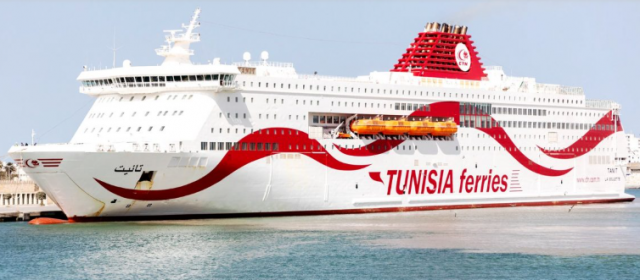Tunisia, rich in history, the Mediterranean sea coast, and lovely landscapes, is a traveler's favorite destination. Whether you are attracted to its ancient ruins, colorful souks, or beautiful beaches, there is never a lack of something to discover. Although flying is the most popular way to arrive in Tunisia, taking the ferry is more scenic and adventurous. Ferries to Tunisia offer a unique experience that combines the pleasure of a sea journey with the convenience of direct entry to key ports in the country. If you are to go to Tunisia, here's why a ferry is the best option for your trip.
Why Take a Ferry to Tunisia?
A Scenic Ride across the Mediterranean
One of the most considerable benefits of taking a ferry is being able to see spectacular views of the Mediterranean. Rather than being locked into an airplane or airport building, you get to sit outside on deck and watch the breathtaking scenery go by as you sail across the sea. Whichever port in southern Italy, France, or Malta you set off from, the ferry voyage allows you to appreciate the beauty of the Mediterranean seashore. Picture sailing through light blue waters as the coastlines of Tunisia slowly appear on the horizon. It can be relaxing and thrilling at the same time.
Convenience and Accessibility
Taking a ferry ride may be more convenient than flying if you are already in a nearby Mediterranean nation. There are regular ferries from many European ports, e.g., Genoa, Marseille, and Palermo, which makes it convenient to take a ferry and get on to Tunisia without the hassles of extended airport transfers or connecting flights. Moreover, ferry terminals in Tunisia, like those in Tunis (La Goulette) and other seaport cities like Sfax and Zarzis, are easily accessible to the rest of the country via public transport, so reaching your destination is easy.
Affordable and Flexible
Ferry travel tends to be cheaper than flying, particularly when booking ahead. With multiple ferry operators providing routes to Tunisia, options are available to suit your budget. Ferries are also more adaptable, with many options for traveling times, ticket prices, and travel classes. Whether you're looking to travel economy or want a more luxurious cabin, there's something for everyone.
Comfortable Accommodations
Today's ferries have all sorts of facilities to provide you with a relaxing journey. All ferries feature large lounges, cafes, and even duty-free shops where you can spend your hours away. If you're making a longer crossing, consider reserving a private cabin for a more comfortable ride. If you're on holiday with your family or friends, some ferries provide spacious seating areas to spend time together. The ability to walk around, stretch your legs, and enjoy the sea breeze is an added benefit compared to the constraints of air travel.
Perfect for Travelers with Vehicles
Taking the ferry can be especially convenient if you plan to explore Tunisia by car. Most ferry routes to Tunisia allow passengers to bring vehicles on board, making it an ideal option for those looking to explore the country at their own pace. Whether traveling by car, motorbike, or camper van, you can easily drive off the ferry and hit the road to discover Tunisia's historic sites, such as the ruins of Carthage or the desert landscapes of the south.
Popular Ferry Routes to Tunisia
Several ferry operators run routes to Tunisia from other Mediterranean ports. Some of the most popular ones are listed below:
Genoa, Italy, to Tunisia: The ferry is one of the most popular routes. It takes around 24 hours and has both daytime and overnight sailings. The trip is comfortable, with cabins and seating available.
Marseille, France to Tunisia: Marseille to Tunis ferry is another good choice. It lasts 20 hours, and you can be assured of an array of services onboard to enhance your experience.
Palermo, Italy to Tunisia: The ferry from Palermo to Tunis is shorter, lasting approximately 10-12 hours. This is a good choice for people who are already in Sicily and wish to have a direct link to Tunisia.
Malta to Tunisia: Ferry routes from Malta to Tunis also offer a speedy and practical link between the two Mediterranean islands. The trip typically takes approximately 4-5 hours.
Ferry Tips to Tunisia
Book Ahead: Particularly in peak tourist season, it's wise to reserve your ferry tickets with FerryNav ahead of time to ensure the lowest prices and best availability.
Bring Essentials: Although ferries have good facilities, ensure that you bring essentials like snacks, entertainment, and any medication you may require during the journey.
Check the Weather: The Mediterranean is sometimes unpredictable, so it's a good idea to check the weather forecast before you travel. Rough seas, particularly during stormy weather, sometimes cause delays or cancellations.
Arrive Early: Getting to the ferry terminal early will save you from last-minute hassles and make boarding a breeze.
Conclusion
Traveling by ferry to Tunisia is not only a means of transport; it's a way to experience the Mediterranean and have an adventure. The convenience, scenic beauty, and low costs make it an ideal alternative to air travel, particularly for those wishing to give their journeys an extra edge. Whether traveling solo, with family, or with friends, a ferry trip to Tunisia will prove to be a memorable beginning to your discovery of this historically rich and culturally active destination. So, the next time you're organizing your trip to Tunisia, try taking a ferry and experience a trip as fascinating as the destination!






